There are some shots in golf that are always going to feel risky. At the very least, they’re going to have players holding their breath. Golfers hitting their approach shots into the 15th green at Augusta National, for example, won’t be able to relax until they see their balls come to rest away from the pond that fronts the green. Similarly, those who are fortunate to play Cypress Point will be waiting with bated breath on the par-three 16th for their tee shots to land—hopefully on dry land and, more specifically, shortly mown grass.
While thrilling, that pair of forced carries are only experienced by a select few, so we’ve compiled a list of eight golf shots that are similarly nerve-wracking but accessible to the public. Although many contemporary architects are limiting the number of forced carries that make up their new designs, these examples prove there can be equal measure of merit and stress in those requisite shots.
Pebble Beach Golf Links, 8th Hole—Pebble Beach, Calif.
Standing in the fairway of the 8th hole at Pebble Beach, you’re bound to feel some pressure. If you successfully chose the right club off the tee—and hit the shot well—you’ll be far enough down the fairway to have a clear view of the green some 170 yards away. (You’ll also be close enough to the cliff’s edge to potentially feel a little uneasy addressing your ball.) If you weren’t as successful in that regard, you’ll likely be a bit farther back. In either scenario, you’ll be faced with the knowledge that your second shot must carry the deep ravine that bisects the fairway and the putting surface. What’s more, the approach is effectively a drop shot, which means you’ll likely be holding your breath for an extra second or two as you wait to see if you’ve pulled it off.
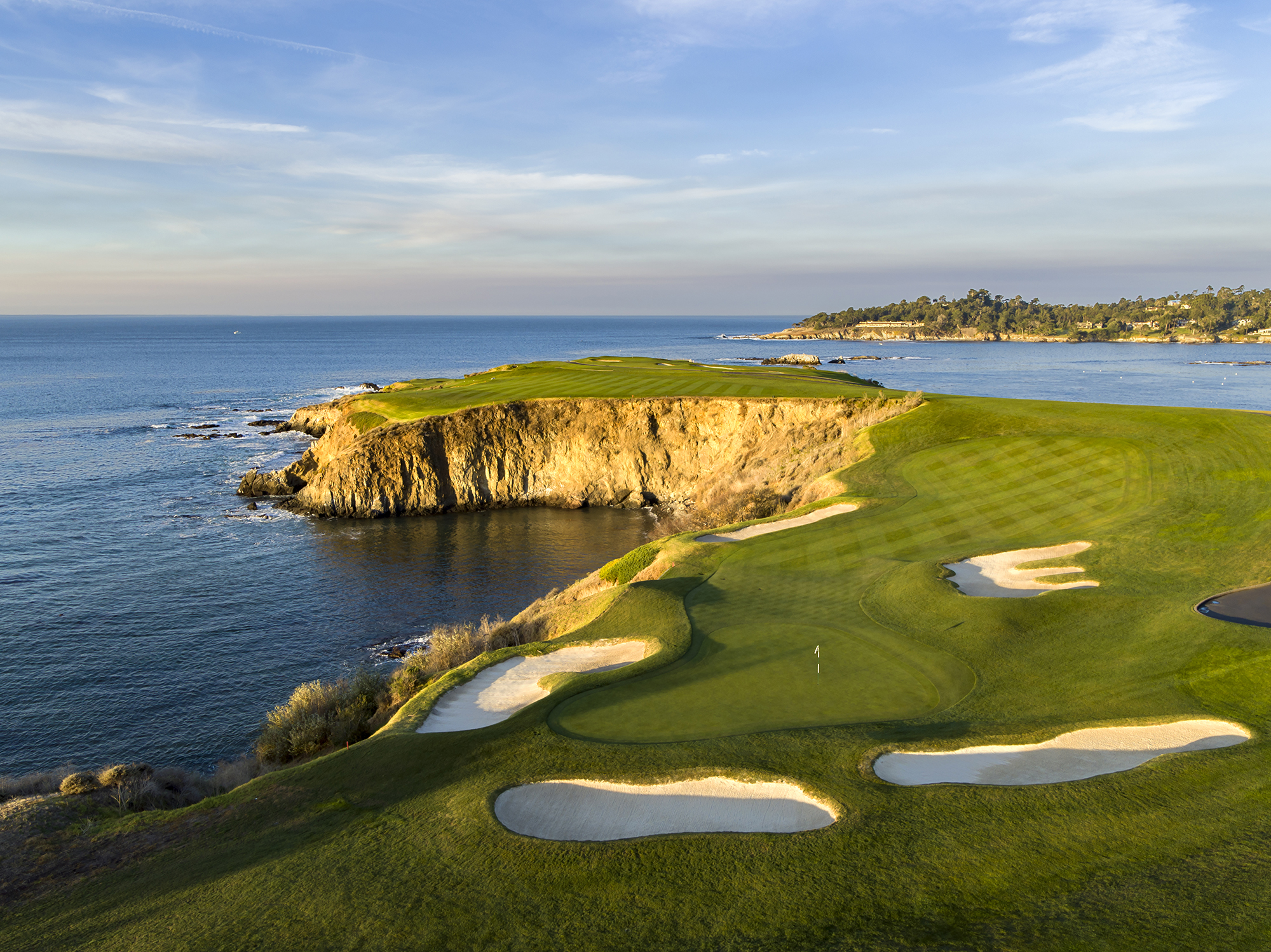
Cabot Cliffs, 16th Hole—Inverness, Nova Scotia, Canada
In the estimation of architects Bill Coore and Ben Crenshaw, tee shots on the 16th hole at Cabot Cliffs are only intimidating the first couple of times; but that doesn’t mean that the shot isn’t always nerve-wracking. With a two-tiered green set out on a rocky promontory, the hole asks better players to hit a forced-carry of almost 180 yards over the edge of the cliffs with the Atlantic Ocean surging into Plaster Rocks Cove below. Even those who want to mitigate some of the risk by using the sloped fairway on the left to funnel conservative shots onto the putting surface must still cover a portion of the hazard. And don’t forget about the wind, which customarily blows in from the ocean and further complicates shot selection and club choice. It all adds up to a thrilling experience, albeit one that will likely have you tense with anticipation as your tee shot hangs in the air.
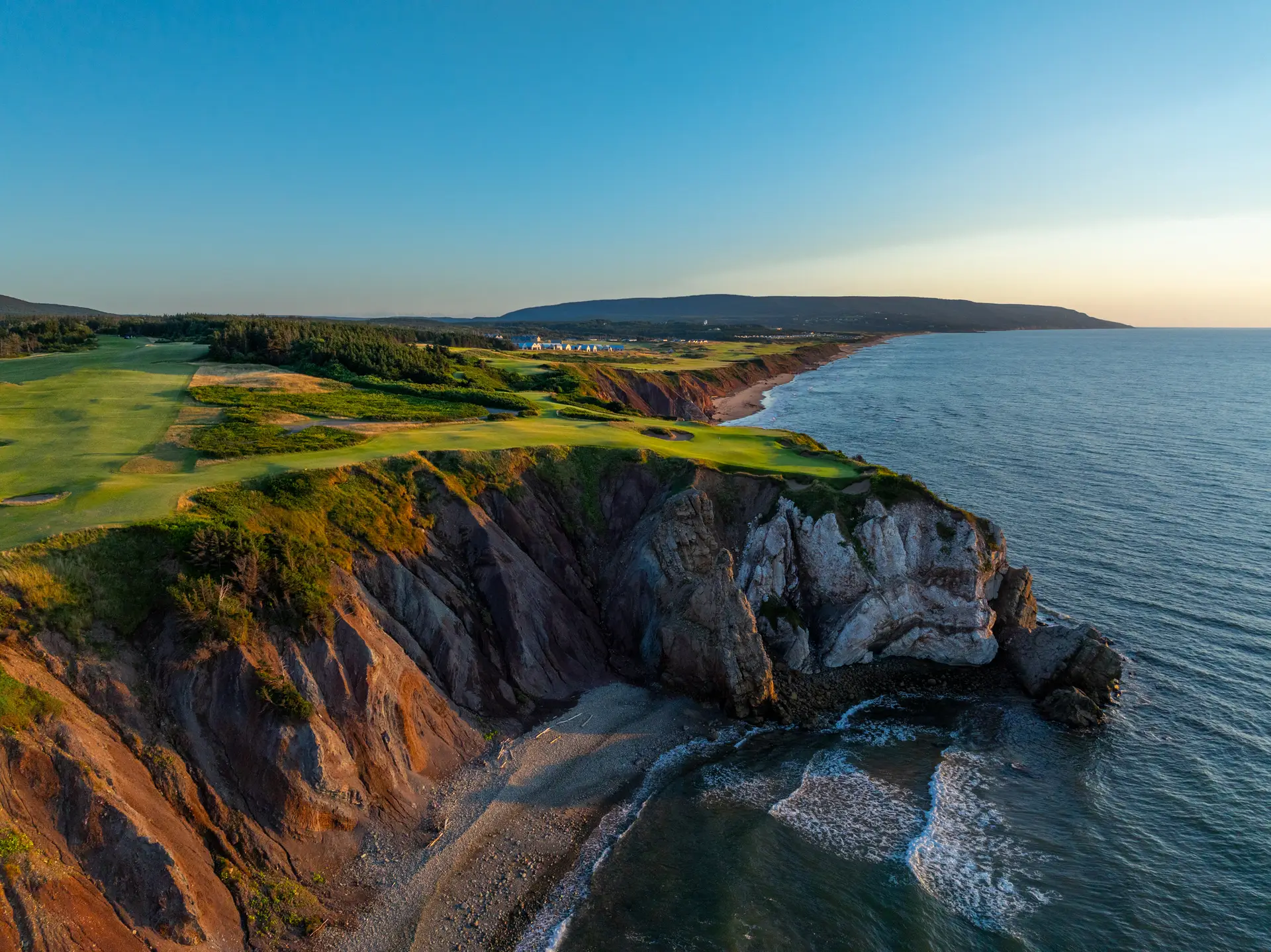
TPC Sawgrass (Players Stadium), 17th Hole—Ponte Vedra Beach, Fla.
There are a lot of reasons why the tee shot on TPC Sawgrass’s final par three is nerve-wracking. Let’s start with the obvious—water everywhere. Even if the hole wasn’t world famous, this tee shot would be incredibly anxiety-inducing. But the hole is famous, which adds to the stress, since you’ve likely thought about playing it for years—maybe decades—and you know that everyone will always ask you how you did playing it. And because of that, the hole will likely be in the back of your mind the entire time you’re playing the 16 holes that precede it. Nothing makes a shot harder than having to think about it for three-and-a-half or four hours beforehand.
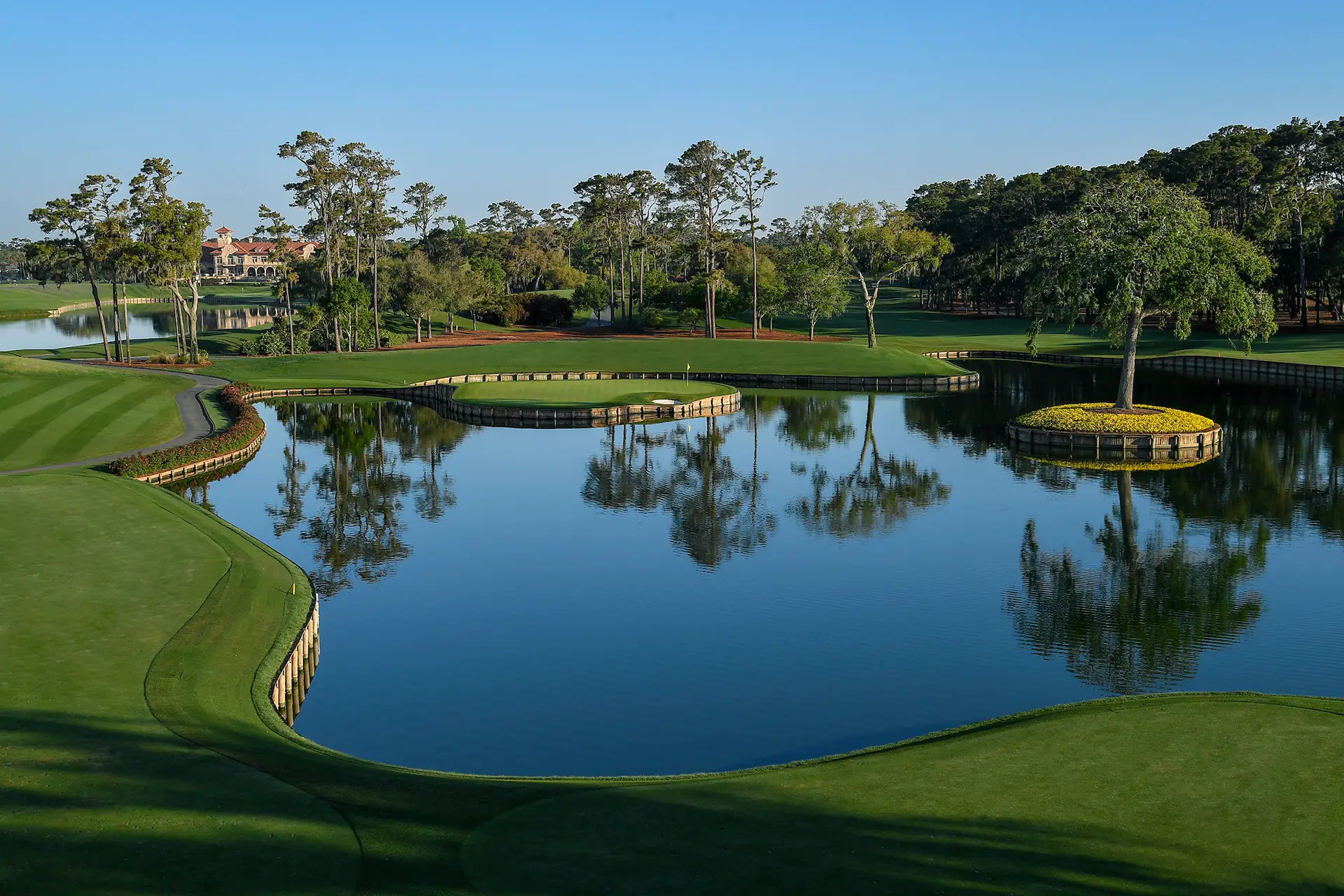
Harbour Town Golf Links, 18th Hole—Hilton Head Island, S.C.
With 100 yards of fairway width to play to, the final hole at Harbour Town is a cakewalk off the tee. Just make sure you enjoy it, because the subsequent shot is anything but. Hit your drive straight down the middle or left out onto the point of the peninsula-like fairway and you’ll be looking at a second shot that has to carry a lot of water and wetlands. A tee shot hit down the right side of the hole creates a somewhat better angle to the green, but it’s not devoid of a forced carry over the hazard, especially if you want to take on the green. Factor in the wind that’s likely blowing off Calibogue Sound to your left, and the final approach shot on Pete Dye’s masterpiece is a brute.

Princeville Makai, 7th Hole—Princeville, Hawaii
The second par three at Princeville Makai shares some DNA with the 16th at Cabot Cliffs, in that players must hit over a recessed cove to a green perched along the cliffs with the ocean to the right. There’s less of a bailout on this hole, however, and what exists of one to the left is an area that, although safe, will never propel golf balls onto the putting surface. Golfers who are nervous about coming up short with their tee shots can take loads of extra club, as there’s plenty of landing area behind the green. But going long introduces another uncomfortable situation, as players will be hitting pitch shots back toward the ravine that falls away just beyond the putting surface. Simply put, risks abound on this hole, and the tee shot is especially nerve-wracking for those who don’t just want to be safe, but score.
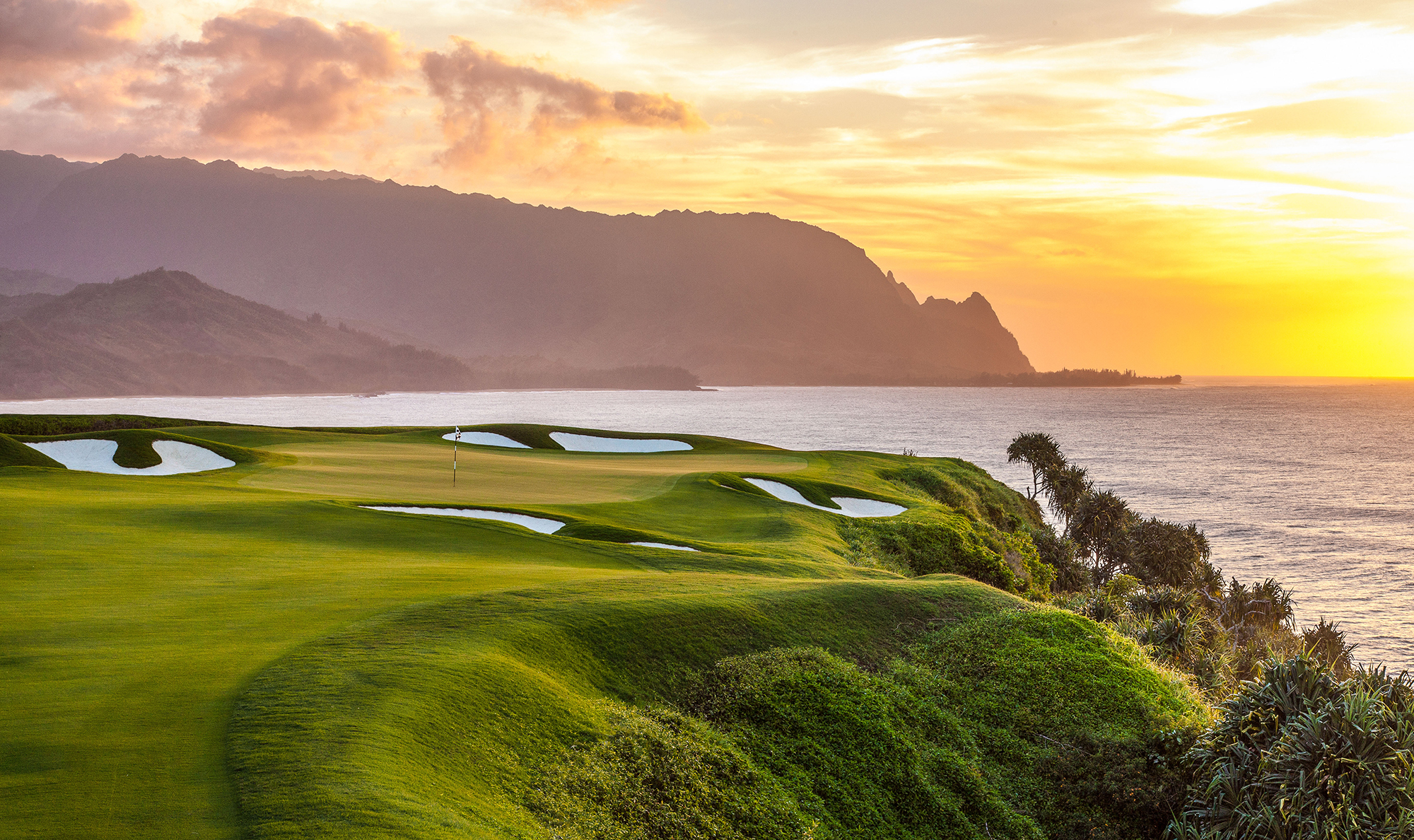
Prestwick Golf Club, 17th Hole—Prestwick, Scotland
The penultimate hole at Prestwick, “Alps,” was originally the golf club’s 2nd hole, and it remains the oldest existing hole in all of championship golf. No matter where you hit your tee shot on this 394-yard par four, the approach into the green will be blind. For first-time players, this experience may best be described as suspenseful. (Blissful ignorance could also be used.) For those with prior experience on this historic links, however, the act of hitting that blind second shot is nerve-wracking to say the least, given that the green is fronted by the expansive and steep-faced Sahara bunker.
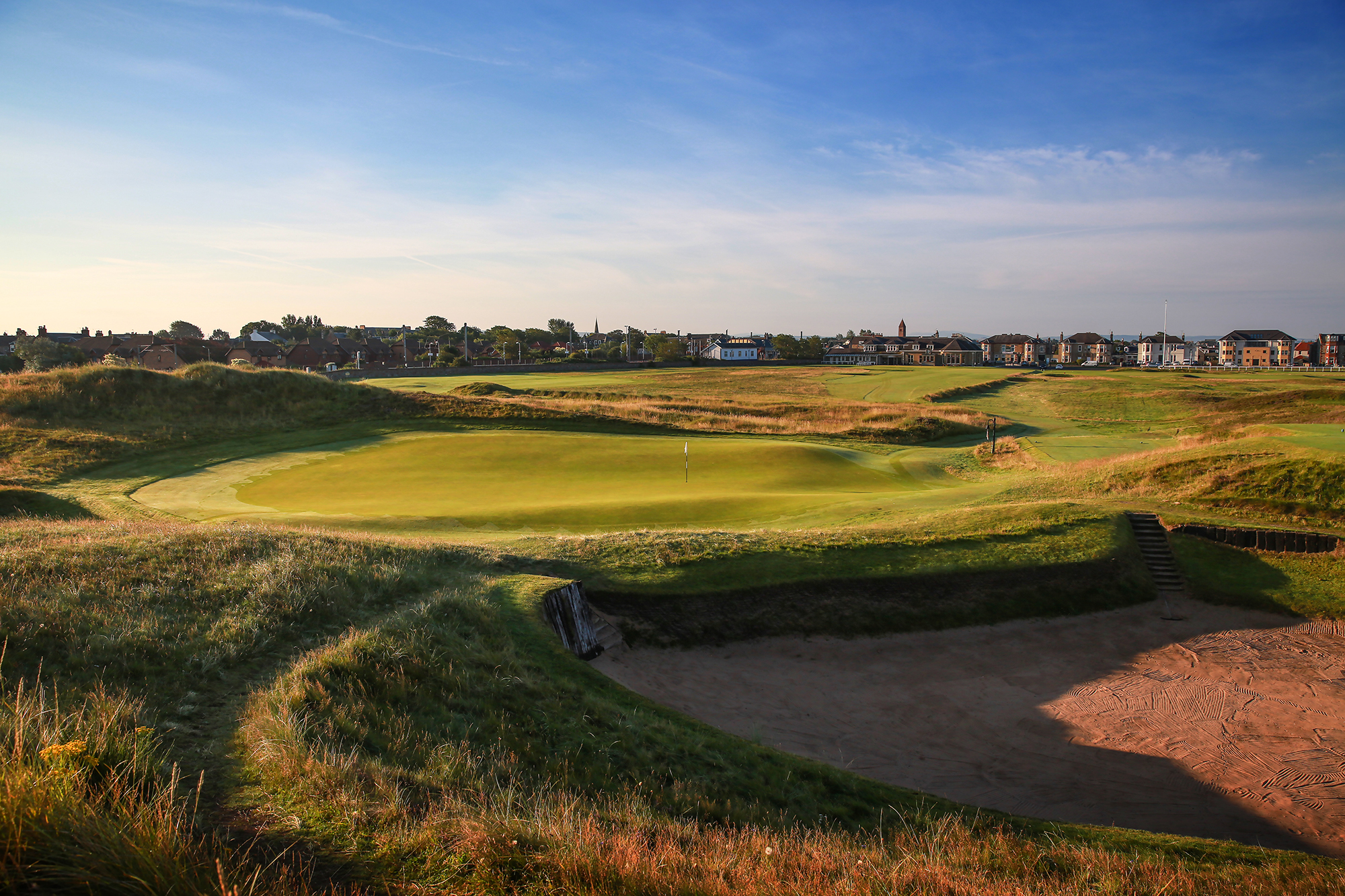
Quivira Golf Club, 6th Hole—Cabo San Lucas, BCS, Mexico
Famous for its polarizing design, the short, cliffside par four at Quivira is demanding off the tee. Whether you’re intending to hit the fairway directly or you’re planning to use the side slope on the right to kick a drive into the short grass, point accuracy is required. Once you’re there, however, things don’t get any easier. If you’ve hit your tee shot far enough down the fairway, you might have a partial view of the infinity green that sits 40 feet below. If not, you’ll be hitting your second shot to that perilously placed putting surface blind. Either way, the shot requires deft touch with a wedge or short iron and will likely need to be struck perfectly given the wind that blows off the Pacific. The shot is nerve-wracking in a vacuum; but it’s more stressful once you factor in the difficulty of the preceding tee shot that presented you with the opportunity to heroic.
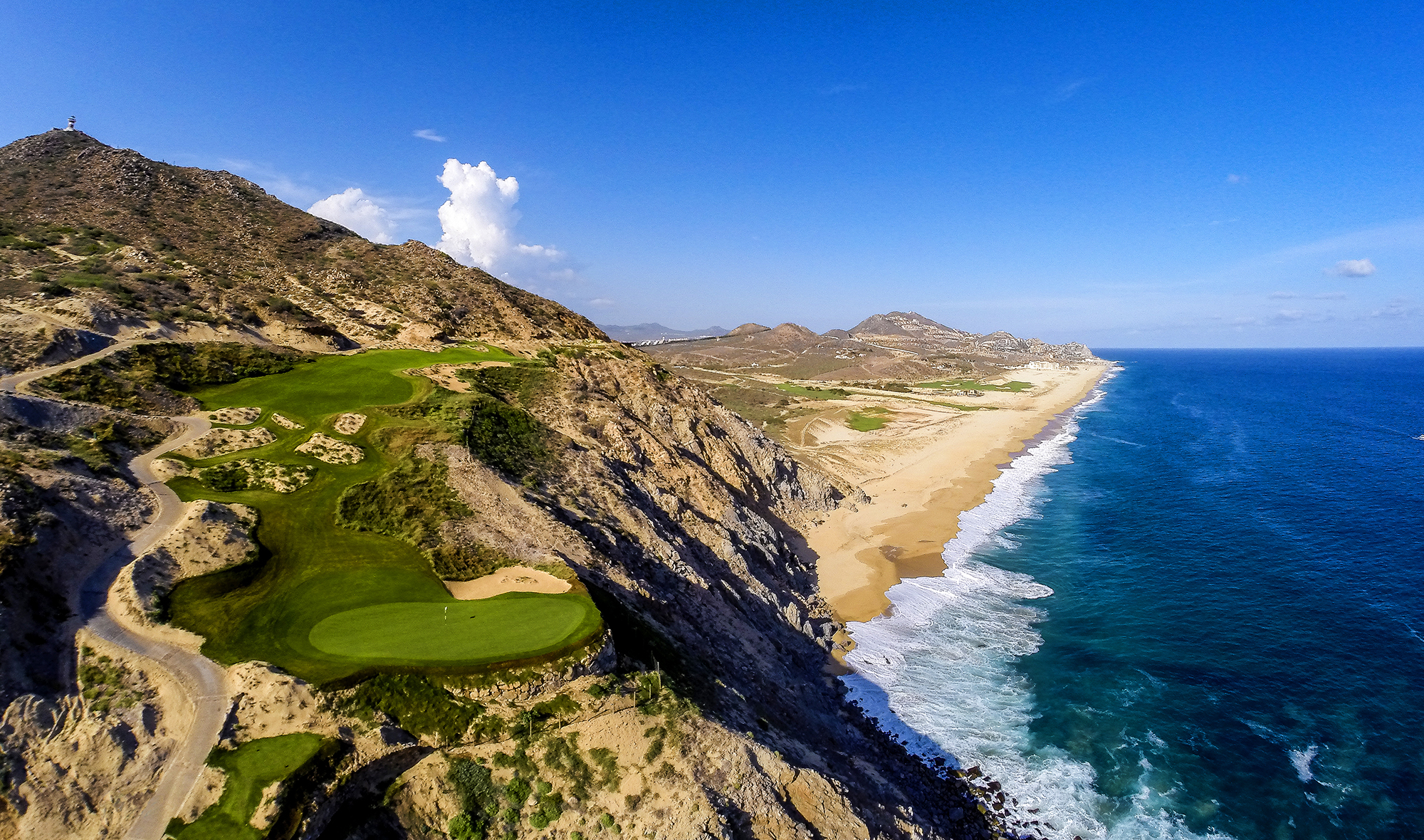
Whistling Straits (Straits), 18th Hole—Sheboygan, Wis.
With copious bunkers scattered across the property, steep dunes and aggressive mounding covered in thick and wiry native grasses, and a smattering of greens set close to the shores of Lake Michigan, the Straits course delivers four to five hours of psychological warfare per round. The final approach shot on the course’s closer—a 520-yard par four appropriately named “Dyeabolical”—is the perfect ending to such a visually intimidating round of golf.
If you’re successful off the tee (avoiding the more than two dozen bunkers scattered about on either side of the fairway), you’ll be faced with a second shot that must cover a stream, which meanders up the entire length of the hole and cuts just in front of the green. The putting surface is guarded by a handful of bunkers, while a steep hillside flanks the rear of the green and is pockmarked by—you guessed it—more than a dozen pot-like bunkers of various size. Ironically, the large green should be a friendly target, but the dangers scattered all around make the second shot a daunting task.
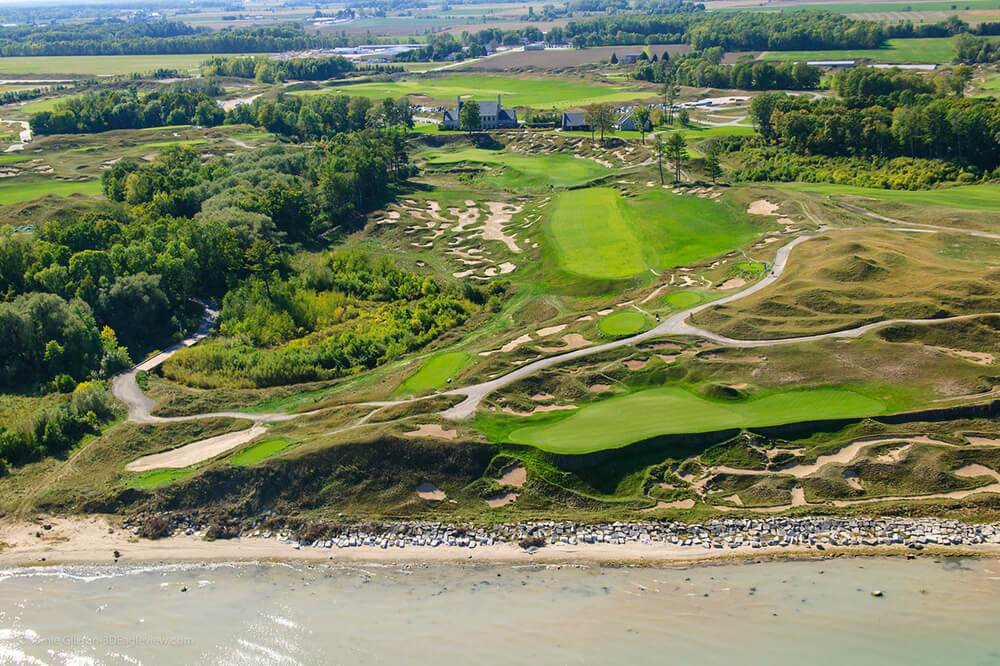


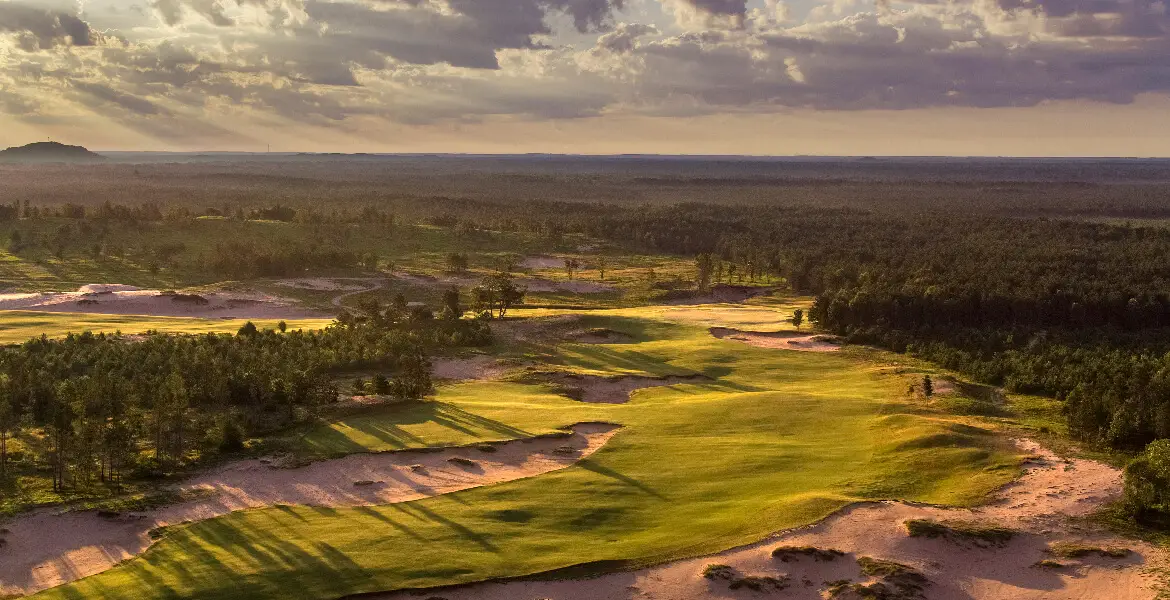
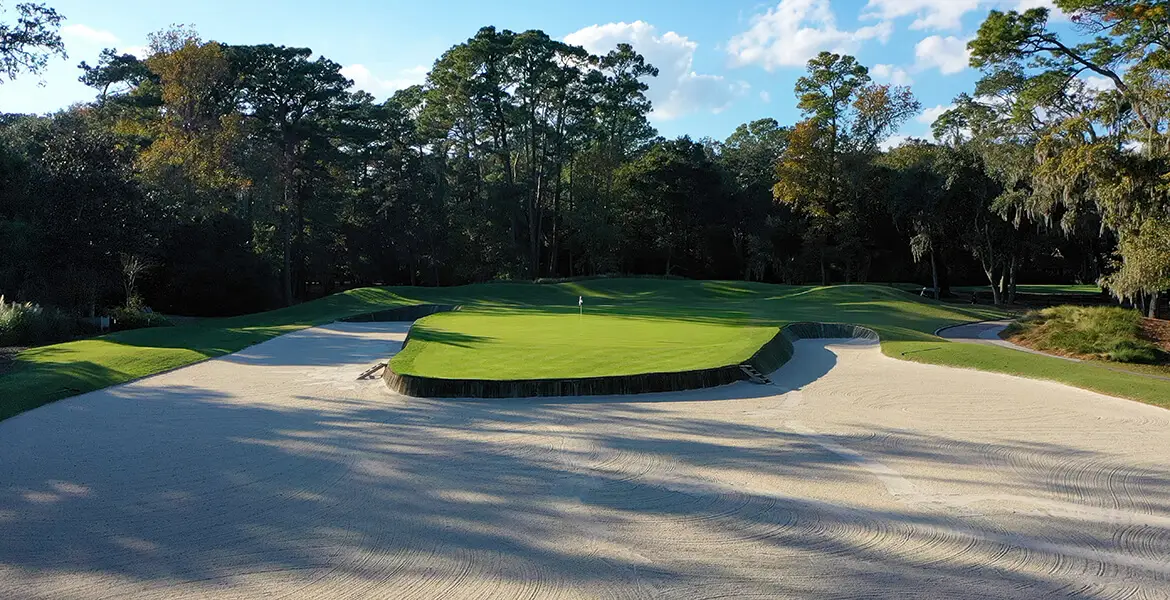
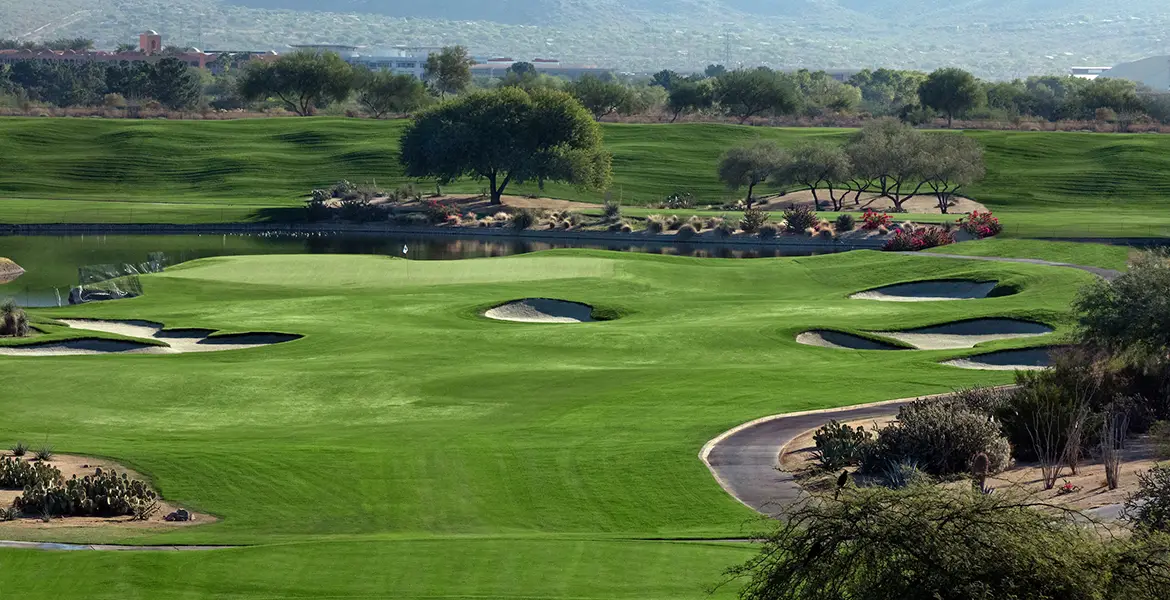
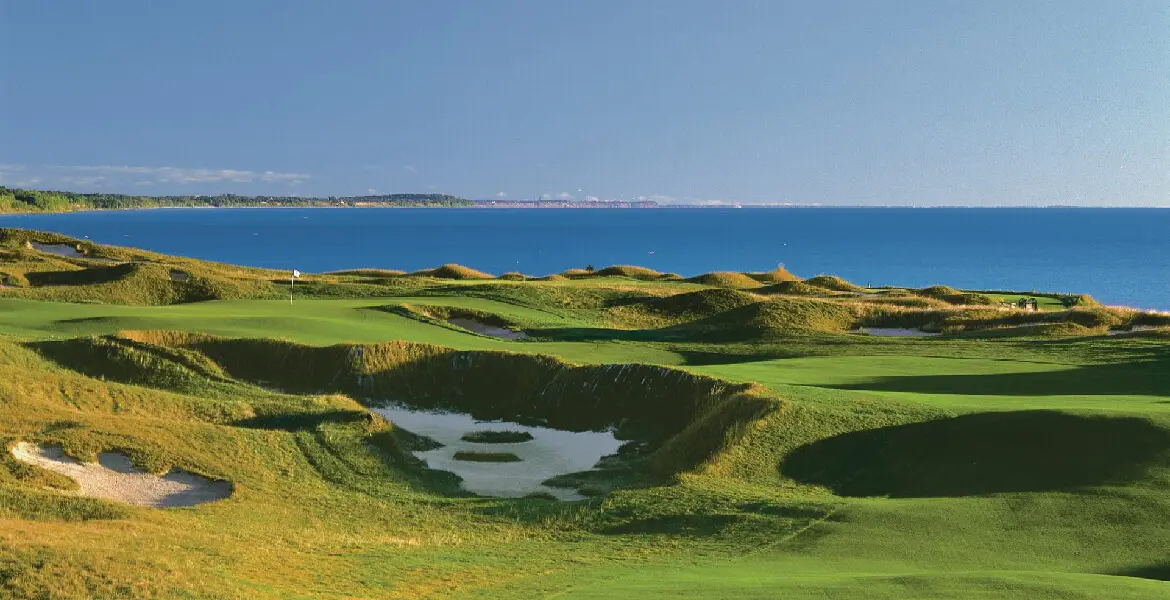
Missed 1st at Macharamish.over the Atlantic.
Ahh, you’re one step ahead of me. Didn’t include the first at Machrihanish because it’ll be coming in a story about harrowing drives. Stay tuned!
Old Head 12th . . . best forced carry ever !! maybe in the “harrowing drives” story 🙂
Bingo
The 3rd at Mauna Kea and the 12th at the Challenge at Manele need to be on this list.
13th at Punta Espada. 250 yard (from tips) par 3 carry over ocean inlet
18 at Corales Tee Shot over ocean inlet
The 16th at Pebble Beach
What about Cabot St. Lucia? They have a few.
16th at Cypress Point
Don’t forget the classic Cape at Mid-Ocean, #5 hole
10th and the 11th at Pasatiempo
Tralee #16 (“Shipwreck”) another great one.